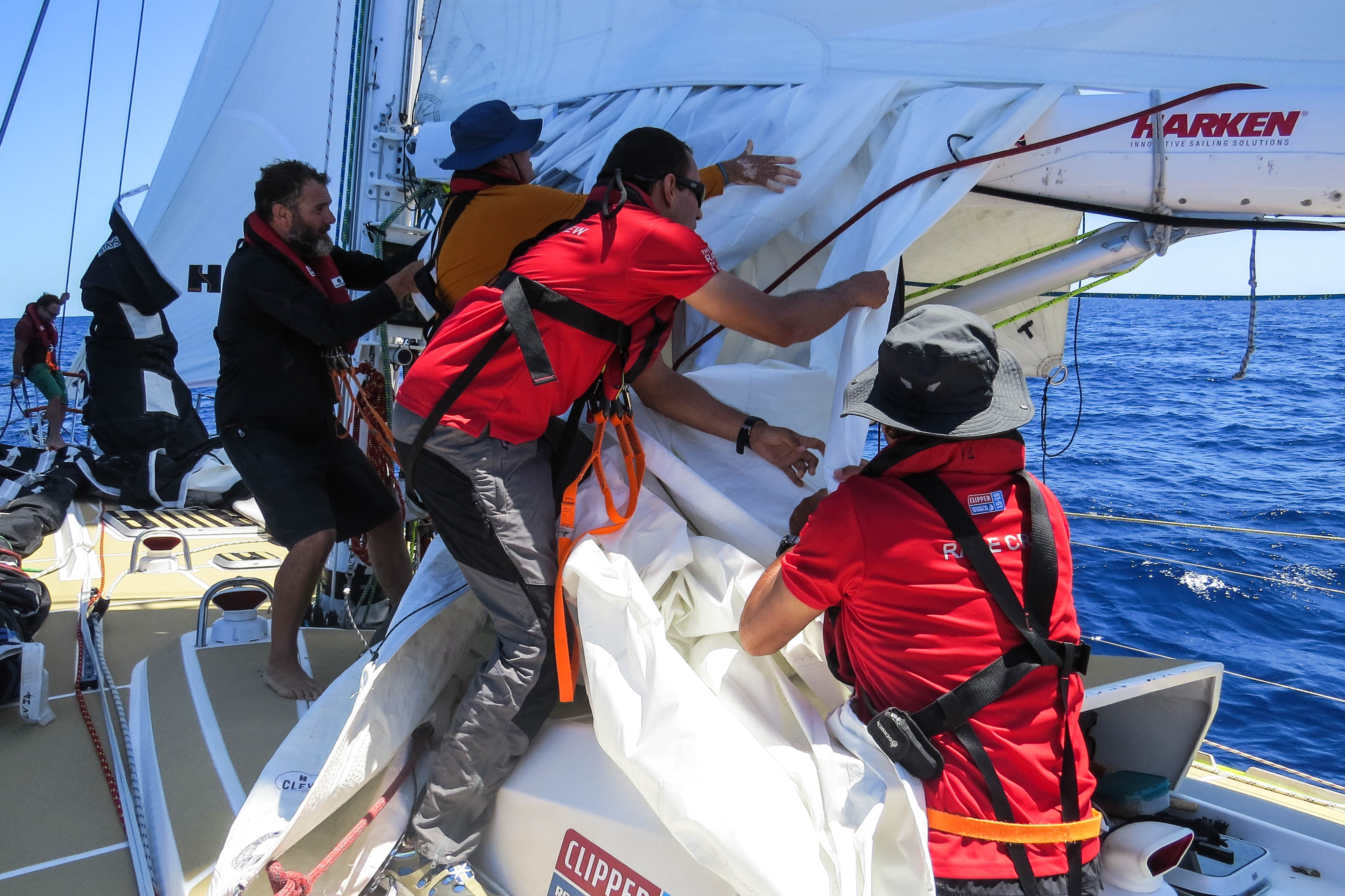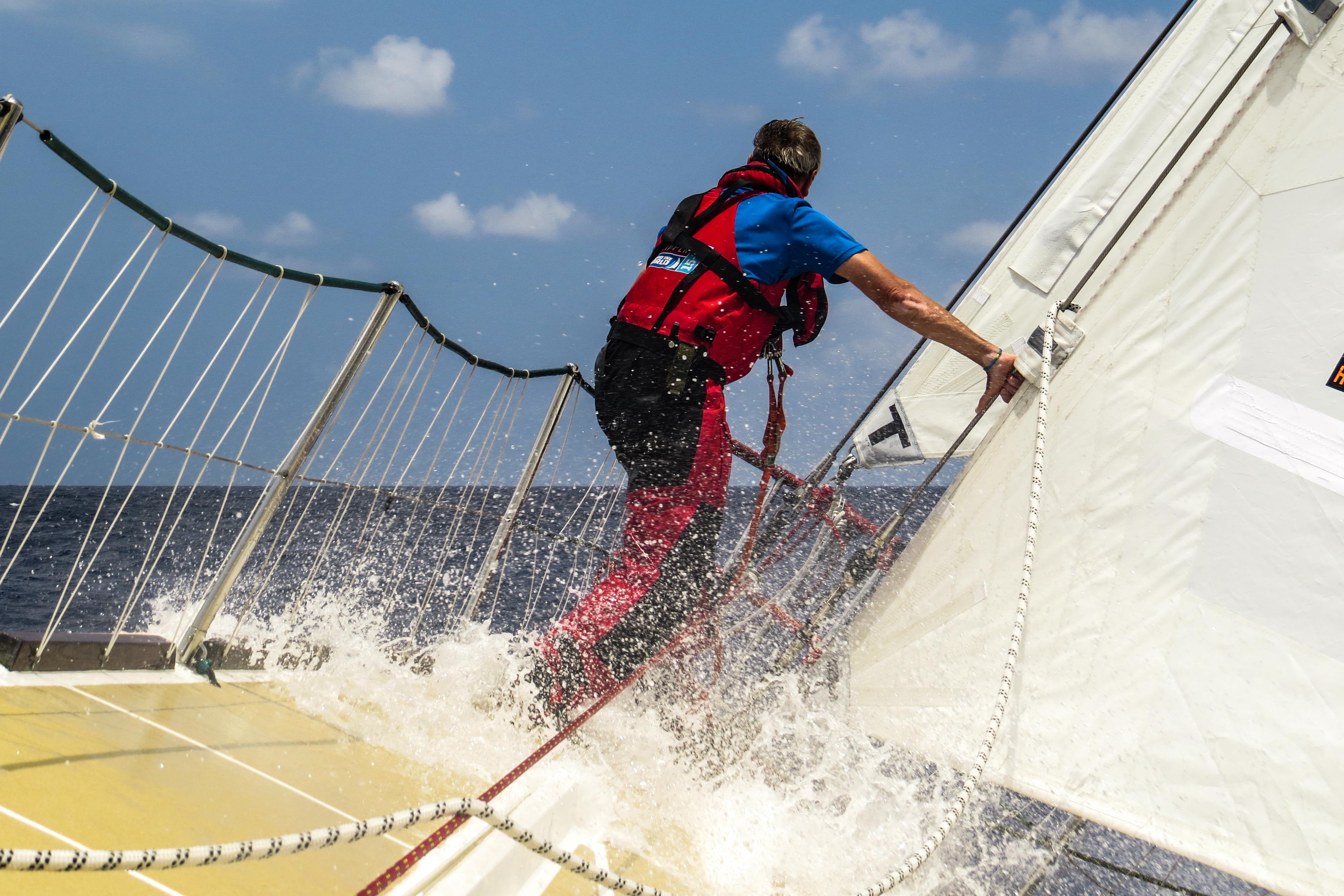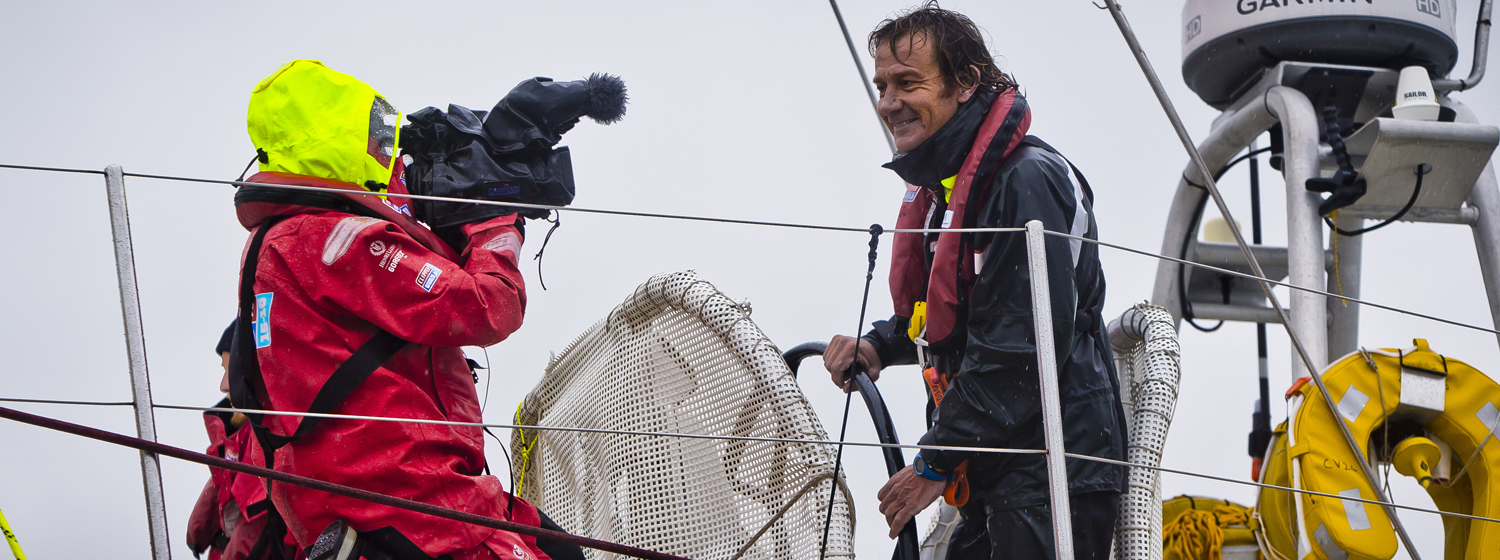Capturing the Action: Kristi Wilson, Race 1
27 September 2015
After circumnavigating during the Clipper 2013-14
Race, Kristi Wilson is back on board as a camera operator for our documentary
team. During Race 1 she joined the LMAX
Exchange yacht. Here Kristi details her experience so far in her new role.
"I'll have to ask the skipper, right now we're all just sheep." An
honest reply from Adrian Roberts, a round the world crew
member, to a simple suggestion from another member of crew on LMAX Exchange during the first days of Race
1 from London to Rio de Janeiro.
Two years ago, I remember having those same exact sentiments as I set sail for
my own circumnavigation on Derry~Londonderry~Doire in the 2013-14 edition.
I wouldn't act on anything without asking at least two fellow teammates and the
skipper. But this time around my role is different, and I am no longer an
active sailing crew member.”
For the past 24 days and 5,200 nautical miles it's
been my job to capture the transformation of 23 individual amateur sailors to
one efficient ocean racing team on camera as the on board reporter. With LMAX Exchange having an incredible lead
over the fleet by more than 250 miles and grabbing the first three points of
the race as they passed through the Scoring Gate there's been more to celebrate
than lament.
That being said, their Race 1 success hasn't come without its challenges. A major
part of this unique experience is the natural growing pains that come with
putting people from all walks of life together to create a new team with the
purpose to cross oceans, not to mention the majority of the crew have never
sailed before completing the four weeks of required pre-race training.
They've had their fair share of 'kitemares.' Getting a
taste of what can go wrong on their first day of the race, all three of
their asymmetrical spinnakers had seen daylight within an hour of
crossing the start line at Southend.
With eleven different nationalities on board, language is also an unforeseen
hurdle that intermittently adds to the complexity of evolutions.
One of the difficulties that comes with leading the race is having to be the first to make tough decisions. After being stuck
in no wind for half a day, the decision was made to turn on the motor once we
entered the 'Doldrums corridor.'
As soon as we crossed the line of 12 degrees North the wind had filled in,
blowing at more than 15 knots. The fear was heavy that the other boats would
choose to sail and have a higher average speed, giving them the opportunity to chip away at the
hard-earned lead of LMAX Exchange.
It was a difficult 24 hours to witness and you could feel the tension lift on
board as each position report from Race HQ arrived revealing the closest competitors
had also turned on their engines.
Yes, naturally, mistakes have been made and obstacles
have been presented, but it's the crew's response to these trials and their
willingness to keep pushing hard that have put them where they are - at the top
of the leaderboard.
The skipper and watch leaders are keen to review
evolutions gone wrong and improve the next time around. More experienced
helmsman provide coaching to reduce the risks of spinnakers wrapping. 'Dummy
Checks' are put in place to ensure lines are run correctly. More importantly,
if something does go wrong, no blame is placed and I see the crew working
together to come to a solution.
After 24 days at sea, this 23 strong crew are anything
but a flock of sheep. Crew naturally fall into their well know
positions when 'prepare to Gybe!' is called by the skipper from the navigation
station. The spinnaker is trimmed without any provocation. Crew members are now
recommending sail changes based on shifts in the wind. The skipper even finds
time to help in the galley with the bread making.
And that simple suggestion of easing the topping lift on day two of the race? It's no longer needed, it just gets done. All
under the watchful eye behind the lens of my camera.
